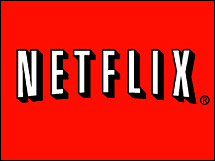September 2009 Archives
 This week Netflix announced a winner in its contest to improve its movie rating software. A team of seven computer engineers, statisticians and machine learning experts, Bellkor's Pragmatic Chaos, won $1 million for creating an algorithm that improves the current software by more than 10 percent.
This week Netflix announced a winner in its contest to improve its movie rating software. A team of seven computer engineers, statisticians and machine learning experts, Bellkor's Pragmatic Chaos, won $1 million for creating an algorithm that improves the current software by more than 10 percent.Some context: Netflix wants happy customers who see the value from its movies-by-subscription service. If its customers love their movies more, they're likely to remain customers longer, tell their friends to sign up, or spend more on the service.
There are two key takeaways here. First, by crowdsourcing the contest, Netflix gained access to the intelligence of a large community of experts. The prize is cheaper than the cost of developing the software in-house. Multiple teams from across the world participated, including a team of 20 that created the same result but demonstrated it just minutes after Bellkor's Pragmatic Chaos. Darn that coffee break! Darn that crosstown commute!
Second, the teams all worked from the same data - the API, or application programming interface, was provided by Netflix. An API generally consists of a ball of data, coupled with rules about how to access and process it. This trend is increasing. A large part of Twitter's growth is linked to its open API and the constant reinvention that accompanies it. For example, Twitscoop uses the same data as Twitter Search, but delivers a graphic interface, tag clouds and other enhancements.
The New York Times has taken steps to open its API, and The Guardian, an English newspaper, is also experimenting with the concept.
Kudos to these newspapers. Inside the API lies all the goodness of traditional journalism, which is desperately trying to establish a sustainable business model. Opening the API makes possible the kind of reinvention that we've seen with Google and Twitter.
Who will save newspapers? Perhaps it's time to look past the usual suspects like journalists, investors and foundations. Let's see what the programmers can do.
 It's a new semester, and that means students everywhere are jumping in to digital publishing, either for fun, self-expression or as part of a classroom assignment.
It's a new semester, and that means students everywhere are jumping in to digital publishing, either for fun, self-expression or as part of a classroom assignment.While student work may seem to have limited scope, at some level it's no different from a page at nytimes.com. If it's published online, it is a public document and can potentially reach a worldwide audience. So it's essential that students respect copyright.
The bulletproof way to avoid copyright liability is to create all the information yourself. Your words, your images. If you're writing a blog post, shoot your own photo or create your own illustration.
But there are sources of images that you can use and avoid copyright liability. You can search the Wikipedia Commons for an appropriate image. The terms of use are generous, but not unlimited, so be sure to read the guidelines for use.
Under Section 105 of Title 17, which covers copyright law, the United States government does not hold copyrights, so you can generally use images from government websites.
Copyright has a "safety valve" called Fair Use, which allows people to incorporate copyrighted works into other works. This allows a book reviewer to reproduce a passage from a novel, for example. But be careful - the boundaries of fair use are uncertain. Case law only provides a set of general principles, which include: purpose and character of the use; nature of the copied work; amount and substantiality of the use; and the effect upon the work's value.
A newer concept for protecting intellectual property rights while accepting that we live in a "Remix" culture is the Creative Commons License. Under this model, online content can be shared under conditions that the author permits. For example, you might be able to use someone else's photograph on your blog, provided that you credit the source and link back to the original. You can learn more about finding licensed work on the Creative Commons website. The photo sharing site Flickr has a "Creative Commons" filter on its advanced search page to help you find sharable images.
In the end, no matter the source of your words, sounds and images, responsibility for their legal and appropriate use is yours. So inform yourself, and choose wisely. This prudent practice will also help you avoid trouble when you're creating messages for an employer.
Additional resources to help locate copyright-free images:
